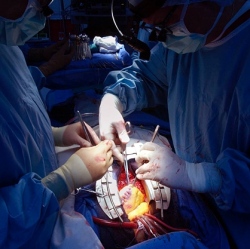
Minor muscle injuries affect tissue cells but not the extracellular components. In severe injuries, however, the extracellular matrix does not function properly and cannot initiate the healing process. Engineered “muscle-mimics” provide the molecules necessary to cue regeneration.
“When significant muscle volume is lost, the physical and chemical cues provided by the extracellular matrix are missing, and the volumetric muscle loss is instead replaced with scar tissue,” said Jeffrey Wolchok, assistant professor of biomedical engineering.
The grant will allow Wolchok and his research team to build muscle-mimicking biomaterials using a cellular approach and to test the material’s regenerative capacities. “Like collecting honey from bees, we collect the extracellular matrix secreted by cells and put it together to build a biomaterial,” Wolchok said.
Wolchok grows cells inside a porous foam. These cells secrete extracellular matrix into the pores of the foam. The foam can then be sacrificed (dissolved in a solvent) so only the extracellular matrix remains. “We can use the sacrificial foam technique to build an engineered muscle-mimic scaffold capable of regenerating damaged skeletal muscle,” Wolchok said.
One example where this regeneration would help is rotator cuff injuries. Each year physicians operate on 400,000 rotator cuff injuries, and approximately one of three of those patients will repeat the surgery because the tendon holding the muscles together re-ruptures.
